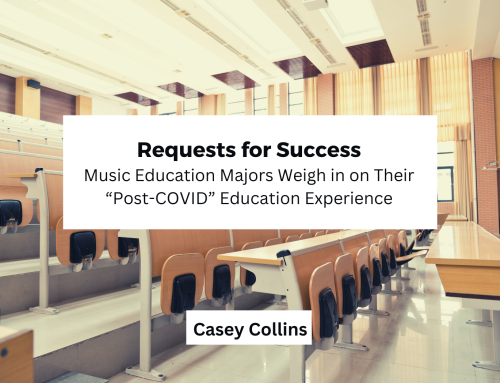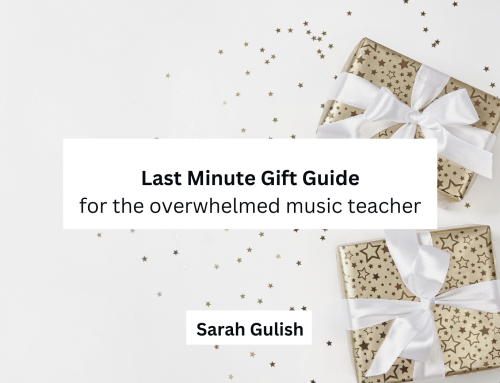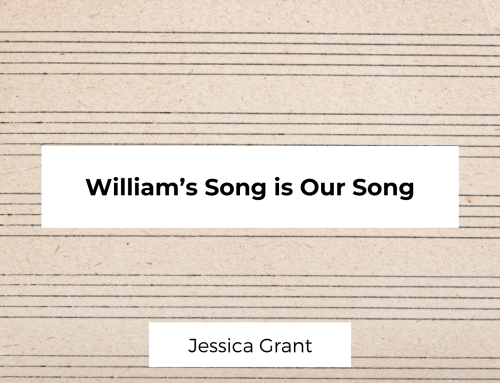Ah, rep selection. Some music teachers become giddy at the thought of programming a concert or selecting new repertoire each season. Still, there are others of us that struggle when it comes to rep selection and can feel paralyzed at the number of choices in our midst. So how do we make sure it’s developmentally appropriate? Inclusive? Educationally sound? Engaging for the students?
For years, I struggled with these same questions and felt like it was all on me to select and execute the perfect concert program.
That all changed a few years ago when I returned to work after my first maternity leave. I realized that I couldn’t do it all. I needed help…from students. And while I’d love to say that the development of new processes and procedures was a direct result of my desire to create more student-centered practices in the classroom, that wasn’t necessarily the case.
Now, years later, I’ve refined and adapted my repertoire selection process to be consistently student-driven, connected to our goals as an ensemble, and fun. I can genuinely say that I love this part of my job because no two years are ever the same. And our programs each year are a direct reflection of the students sitting in front of me.
It is important to note that the strategies I share in this blog post and the next stem from my work as a high school string orchestra director. These strategies can be adapted and applied to any ensemble at any level. In my district and my state, I am not compelled to perform specific pieces for competitions or festivals. Therefore, we have a lot of autonomy in the music we select.
Finally, this first blog post focuses on pre-composed music. For my ensemble, this means music already written for string orchestra. In the next post, I’ll share repertoire selection strategies that result in student-created arrangements or commissioned works.
Table of Contents
STEP 1: Gather Data
I gather a ton of data from students to learn more about their music preferences. Throughout the year, I poll them to find out: What have they loved playing? What did they not enjoy playing and why? (The why is extremely important! Some students love how certain pieces of music sound but find them too difficult or too easy. The opposite can also be true). I also want to know what students are listening to NOW. What songs are on their favorite playlists? What music moves them?
STEP 2: Develop Concert Vision
How do you program a school concert? What do you consider when you select repertoire? These are conversations we have as an entire ensemble. I find that students have incredible ideas about program flow and acknowledge the importance of inclusivity in rep selection. It also provides an opportunity to ask important questions of our kids, like “Is it important to consider the diversity of styles and composers? Why or why not?” “Should we consider the companies we use to purchase our repertoire?” “What is the most important aspect of repertoire selection? Is it difficulty level? Style? Theme?” Letting students into the why behind the process and even allowing them to develop a why is incredibly empowering. I always share my own philosophy of repertoire selection which was heavily influenced by this Musicast interview with Dr. Tonya Mitchell-Spradlin. Tonya shares that her aim is always to look at a concert program and ask, “If this program were a society (based on the styles of music, composers, etc.), is this a society I would like to live in?” This question has helped me avoid creating monochromatic programs in every sense and has helped me encourage students to consider the same.
STEP 3: Repertoire Exploration
Involve students in the discovery process! Each spring, we complete this activity for the following school year. First, students scour websites (like Rising Tide Music Press) with the appropriate parameters for our group regarding skill level and select pieces they would like to perform. Then, we create a list of our group favorites, and I order a combination of pieces that are beloved by students and ones that I think would work well for our group.
STEP 4: Sightread
In the first few weeks of a concert cycle, we sightread A LOT. We sightread student selections, we sightread my picks, and we sightread music in our library that we haven’t played in a few years. I also play recordings for students to hear each piece’s finished version. After each selection, students vote (with a thumbs up, thumbs down, or in the middle), and I get an immediate sense of how they feel about each piece. I also ask for some verbal feedback.
STEP 5: Rock the Vote
I use google forms for this step. In the form, I list the name of every song we sightread (that seemed to be generally enjoyed by the group) with a link to the audio of that piece. Next, students indicate their favorite piece, second favorite piece, and least favorite piece. They also tell me why they made those selections. Finally, they put together their dream concert program from the list of choices and justify their program (How does this program overall fit our vision for this concert?). Dr. Marci Major and Hannah Knauss developed an excellent project for this step in their book, Choral Connections, in which students create concert programs from YouTube videos.
STEP 6: Explore Data Together
Once students complete the form, we explore the answers together. One of the reasons I love using Google forms is that it generates pie charts based on the answers students give. We can clearly see which pieces were the most loved and which ones sunk to the bottom of the list. We can also look for similarities in concert programs and see if there are any programs that consistently appear.
STEP 7: Select and Practice
Based on the data and conversation, we select two or three pieces (depending on the time allotted for that concert) and get to work! There will always be a few students that really want to play a specific piece of music that wasn’t selected by the whole group. I always try to keep that in mind for future concerts, or provide the opportunities to work on those pieces in another format. I also try to honor the strong preferences of my seniors with the knowledge that these will be their last concerts in our orchestra!
STEP 8: Perform and Share
The beauty of this process is that students are involved in selecting, programming, and executing our concert program from day one. For our concerts, students are engaged in sharing the thought process behind their selections and what the program means to them. We accomplish this through short-form videos that we project at the concerts (these are great as transitions between groups!) and through program notes. Danielle Larrick has a great program notes project that could be used for this step.
Final Thoughts
Is it possible to program a concert that all ensemble students love, and that checks all of the boxes for your mission and vision? Perhaps not. But, is it possible to create a culture where students feel agency in their ensemble experience? And, can repertoire selection be a place where you can engage in meaningful conversations and learn more about students and your program? Absolutely!
In the next blog post in this series, I’ll share thoughts on how my students select songs to arrange themselves and how we use commissions to give students voice and choice.
What about you? Do you involve students in the repertoire selection process? Share your thoughts in the comments below.




Leave A Comment